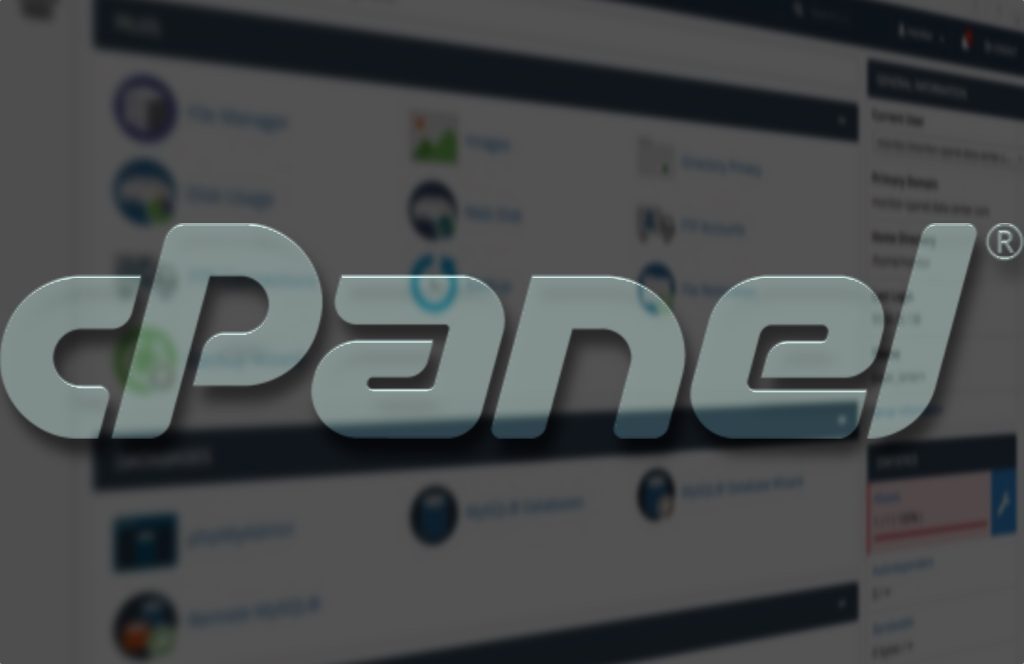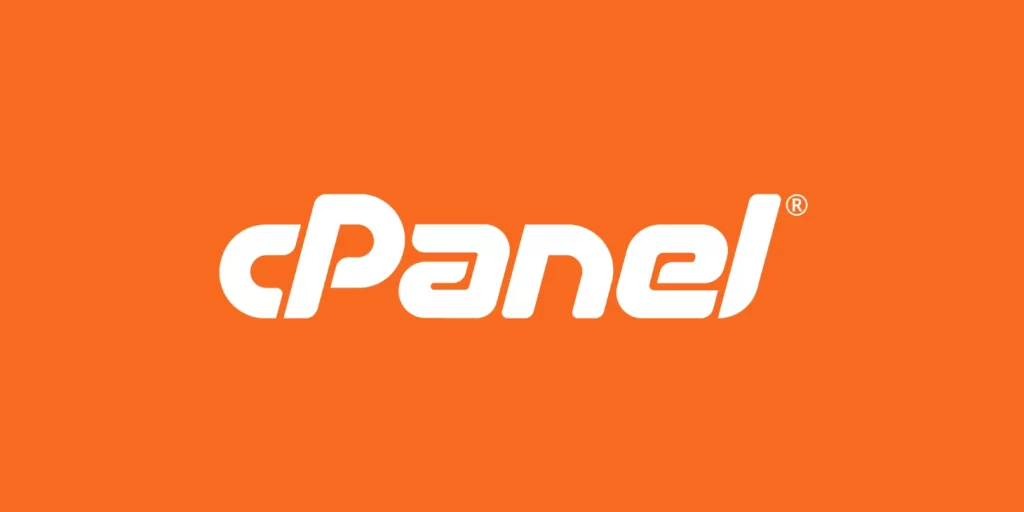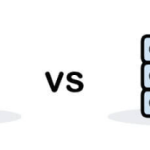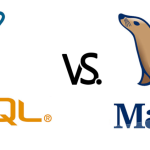cPanel, a Linux-based graphical interface (GUI), streamlines website and server management. This intuitive platform provides tools for email account setup, domain administration, and web application installation. Simplifying website administration, it allows you to focus on your site’s content while efficiently managing the technical aspects of web hosting.
Explore top-notch cPanel hosting solutions that come equipped with all the essential features for running your website seamlessly.
Table of Contents
Key Points
- cPanel is a user-friendly platform crafted for effective website and server management.
- While cPanel simplifies website management, it may entail certain costs.
- Understanding the role of cPanel is crucial for proficiently managing web hosting tasks for your website.
Understanding cPanel
It is a user-friendly platform designed to facilitate website and server management. It streamlines various tasks such as creating email accounts, overseeing domains, and installing web applications, catering to both novice users and seasoned webmasters.
Analogous to the control center of a home entertainment system, The functions as a versatile tool. Much like manipulating TV channels, adjusting volume, and accessing streaming services from a single remote, this platform provides a unified and user-friendly interface to efficiently handle website and server management. This integration simplifies the process of maintaining and updating your website with ease.
History of cPanel
In 1997, John Nick Koston conceived cPanel as a solution to streamline web hosting management. Initially designed as a control panel for Linux servers, it rapidly gained popularity due to its uncomplicated interface and practical features. As the demand for user-friendly hosting tools surged, It emerged as a preferred choice for both webmasters and hosting providers.
Today, cPanel stands as a renowned hosting control panel, earning the trust of millions of users. Its evolution over the years includes the incorporation of new features and technologies to align with the dynamic landscape of web hosting. Regular updates and a commitment to enhancing user experience have positioned cPanel as a frontrunner in the industry.
Understanding the Functions of cPanel
cPanel streamlines the management of websites and servers, offering a user-friendly interface for handling crucial tasks, catering to both novices and seasoned users. Here’s an overview of its capabilities:
- File Management: Easily manage files, folders, and FTP accounts through cPanel, facilitating the seamless upload, editing, and organization of your website’s content.
- Email Management: It enables the creation and administration of email accounts, along with the setup of forwarders, autoresponders, and spam filters for maintaining a tidy inbox.
- Domain Management: Simplifying the process of adding and overseeing domains, subdomains, and redirects, cPanel ensures a well-organized and easily navigable website structure.
Benefits of cPanel?

Simplifying Web Hosting with cPanel
It streamlines web hosting tasks, allowing you to concentrate on crafting and maintaining your website while it efficiently manages the technical aspects. Widely adopted, being utilized by 0.4% of all websites, it offers several advantages:
User-Friendly Interface: With an intuitive interface, it simplifies tasks such as setting up email accounts and managing files. Clear menus and helpful tips ensure quick access to the necessary tools.
Versatile Toolset: Boasting a diverse array of features, it provides tools for handling domains, databases, and security settings. This versatility makes it an adaptable option for various webmaster requirements.
Compatibility and Integration: Panel seamlessly integrates with numerous web hosting services and establishes smooth connections with popular apps like WordPress and Joomla. This seamless compatibility facilitates the effortless creation and management of your website.
cPanel Drawbacks
While cPanel boasts numerous advantages, it comes with certain drawbacks that warrant consideration before selecting it as your web hosting control panel. These include:
- Cost: it is not always provided free of charge, and certain web hosting providers may levy additional fees. Presently, the price varies between $15.99 and $59.99 per month, presenting a potential drawback for those on a tight budget seeking a cost-effective solution.
- Limited Compatibility: Primarily designed for Linux-based servers, it might not be the ideal choice for users who prefer operating systems like Windows.
- Learning Curve: Despite its user-friendly nature, becoming acquainted with its features and functions requires some time and effort. This learning curve could pose a challenge for users seeking a swift and efficient website management solution.
Initiating Your Journey with cPanel

Starting with cPanel: A Step-by-Step Guide
Embarking on your cPanel journey is a simple process. Just follow these steps:
- Choose a Web Host with cPanel Support:
- Search for reputable hosting providers that include cPanel in their plans.
- Compare various hosting options, considering cPanel availability and evaluating their features.
- Select a provider that aligns with your website’s requirements and budget.
- Access Your cPanel Account:
- Obtain login details, including username and password, from your hosting provider.
- Visit the provided URL to access the cPanel login page.
- Sign in using the provided credentials.
- Navigate the cPanel Interface:
- Explore the control panel dashboard to familiarize yourself with the layout.
- Learn about the features and tools available in cPanel.
- Refer to documentation or contact your hosting provider’s support team for assistance as needed.
Ways to Enhance Your cPanel Experience for Website Management:
As you start using cPanel, consider these tips and tricks to optimize your experience:
- Customize Your cPanel Layout:
- Save time by rearranging icons and categories on your c Panel dashboard to match your workflow.
- Log in to c Panel, click the “Customize” button in the upper right-hand corner, and tailor the layout to your preferences.
- Use Keyboard Shortcuts:
- Boost efficiency by learning and utilizing keyboard shortcuts in c Panel.
- Press the “?” key while in c Panel or refer to the c Panel documentation to view available shortcuts.
- Create Shortcuts to Frequently Used Tools:
- Streamline website management by adding frequently used tools to the control panel favorites section.
- Click the star icon next to a tool to add it, ensuring quick access to your favorites at the top of the dashboard.
- Stay Up-to-Date with cPanel Updates:
- Take advantage of new features and security patches by staying informed about c Panel updates.
- Check for updates within c Panel or subscribe to the c Panel blog to ensure your control panel is up-to-date, contributing to a secure and smooth-running website.
Managing Your WordPress Site with cPanel
Using control Panel with WordPress can make managing your website easier and more efficient. Here are some tips:
- Install WordPress: You can do this using the Softaculous auto-installer feature in c Panel. This tool automates the installation process, making it quick and simple.
- Manage your WordPress site directly from c Panel: You can update and optimize your site’s performance without having to switch back and forth between different platforms.
- Take advantage of c Panel’s plugins for WordPress: Popular plugins like Jetpack, WPForms, and Yoast SEO can help you with site analytics, form creation, and search engine optimization, respectively.
Using cPanel for Your Online Store
it simplifies managing e-commerce websites. It helps with the installation, configuration, and management of e-commerce platforms. You can use it to manage product catalogs, orders, and integrate payment gateways and shipping providers. Here are some tips for using it on your online store:
- Install e-commerce platforms easily with c Panel: Quickly set up popular e-commerce platforms like WooCommerce, Magento, and OpenCart on your website using Softaculous auto-installer
- Manage your product catalogs and orders with ease: c Panel lets you easily manage your products and orders, providing you with a streamlined view of your e-commerce site’s performance
- Integrate payment gateways and shipping providers: c Panel allows you to easily integrate your preferred payment and shipping options for customers to choose from during checkout
- Save time and improve customer experience: Using c Panel for e-commerce management can help save time and improve customer experience, leading to increased sales and customer satisfaction
Exploring the Software and Web Applications of c Panel
Enhancing Your Website’s Functionality and Management with c Panel
It provides a diverse array of web applications and software to elevate your website’s capabilities and streamline management tasks. Here are some key features at your disposal:
- Softaculous Auto-Installer:
- Softaculous is an auto-installer that simplifies the installation of various applications, including WordPress, Joomla, Drupal, and more.
- Effortlessly set up a fully functional website without requiring extensive technical knowledge.
- Website Builders:
- Access website builders that empower you to create a website without the need for coding expertise.
- Choose from a variety of templates and customization options to design a website tailored to your specific requirements.
- SSL Certificate Management:
- Utilize the c Panel SSL/TLS Manager, an effective tool for managing SSL certificates.
- Easily generate, install, and manage SSL certificates for your domain, ensuring the security of your website.
- PHP Configuration and Version Control:
- Given that PHP is widely used for dynamic websites, c Panel allows you to configure PHP settings and exercise version control.
- Maintain the smooth and efficient operation of your website by easily switching between PHP versions using c Panel’s version control feature, considering PHP’s 77.5% usage rate among websites with known server-side programming languages.
Analyzing Website Performance with cPanel’s Metrics
it provides a range of analytics and metrics tools to help you monitor and analyze the performance of your website. Here are some of the key tools offered by this:
- Webalizer and AWStats
Website traffic analysis helps you understand how visitors interact with your website and identify areas of improvement for better performance. It can also track the effectiveness of your marketing campaigns and identify opportunities for growth, leading to higher customer satisfaction and retention.
Popular tools for website traffic analysis include Webalizer and AWStats. They provide detailed reports on visitor demographics, page views, unique visitors, and more.
- Bandwidth Usage
A report shows that 88% of online visitors are less likely to return to a website after a bad experience. This is why monitoring your website’s performance, including data transfer and bandwidth usage, is crucial in ensuring a positive user experience and preventing potential loss of customers.
Using c Panel’s bandwidth usage tool can help you track your website’s data transfer and performance. This can help you optimize your hosting plan as needed.
- Error Logs and Access Logs
control Panel error and access logs give detailed information on website and server errors, as well as visitor access to your website. By using these logs, you can identify and troubleshoot issues with your website and track visitor behavior.
Maximizing Website Security with cPanel’s Security Features
Websites face an average of 94 attacks per day and receive around 2,608 bot visits per week. With it, you can keep your website and server protected from potential threats with its security features. Here are some that you can use:
- Password-Protected Directories
Password-protected directories in it let you restrict access to certain areas of your website. This can be useful for sensitive information or member-only sections. To set it up, simply navigate to the Password Protected Directories section of control Panel and follow the instructions.
- IP Address Blocking
IP address blocking in control Panel blocks access to your website or server from specific IP addresses or ranges of IP addresses. This can be helpful for blocking spam, bots, or malicious users. Set it up by navigating to the IP Blocker section of it and follow the instructions.
- Two-Factor Authentication
Two-factor authentication adds extra security to your Panel account by requiring a code in addition to your username and password. To activate, go to the Two-Factor Authentication section of cPanel and follow the instructions.
- Hotlink Protection
Hotlink protection in control Panel prevents other websites from using your website’s images, videos, or other media without permission. This helps reduce bandwidth usage and protect your content. You can start using it by going to the Hotlink Protection section of it and following the instructions provided.
Conclusion
So, what is cPanel? it is a powerful platform and tool for website management. In this guide, we’ve covered the basics of what it is, its history, what it does, its benefits and drawbacks, and how to use it properly to make managing your website easier and more efficient.
It helps improve website performance, security, and user experience. It’s user-friendly and powerful, making it valuable for anyone looking to manage their website effectively. By continuing to learn more about it, you can fully utilize its benefits and improve website management.






